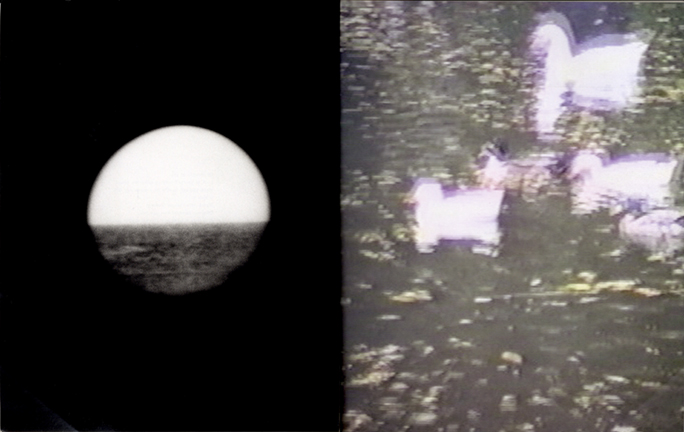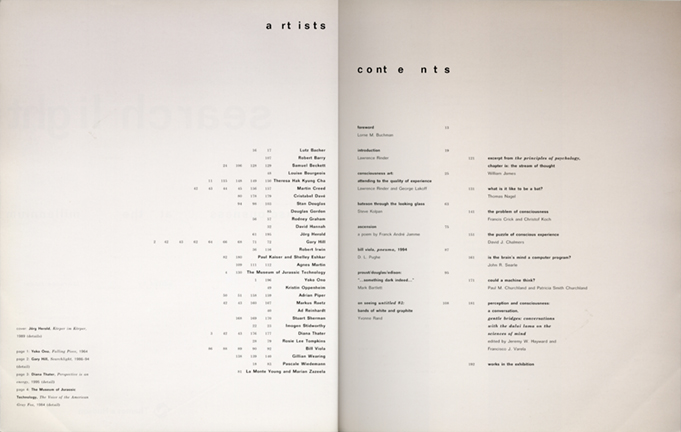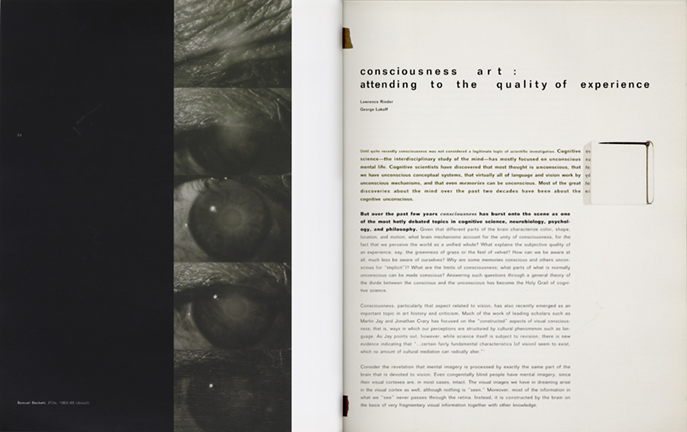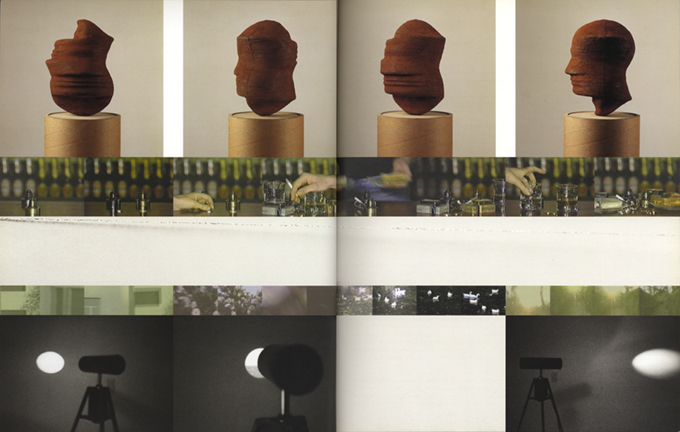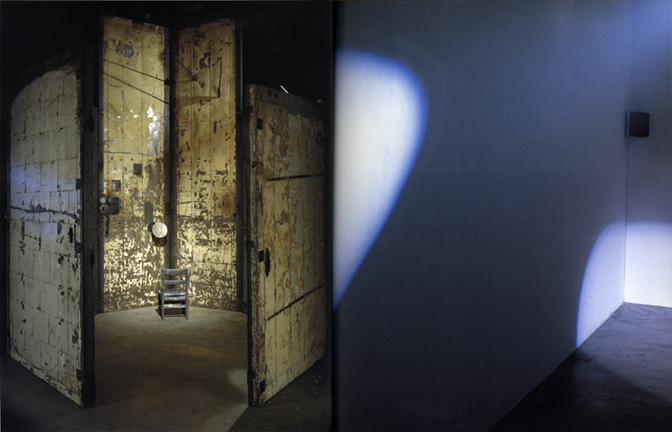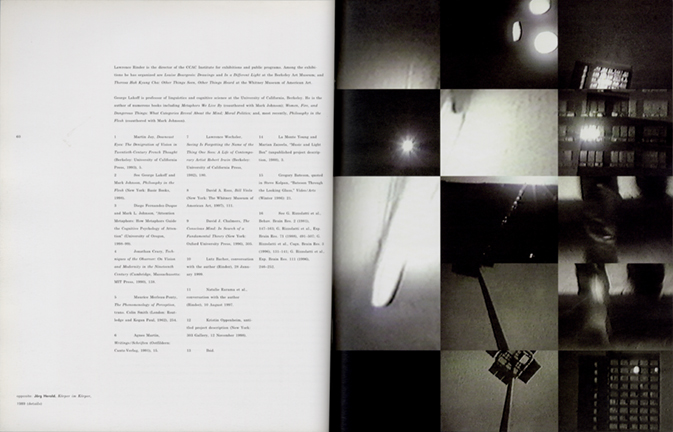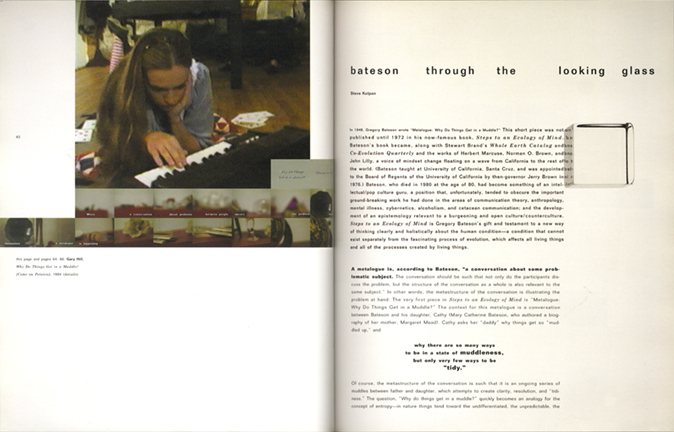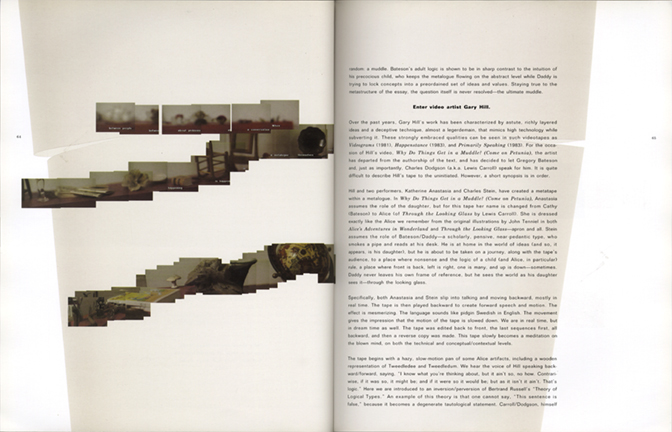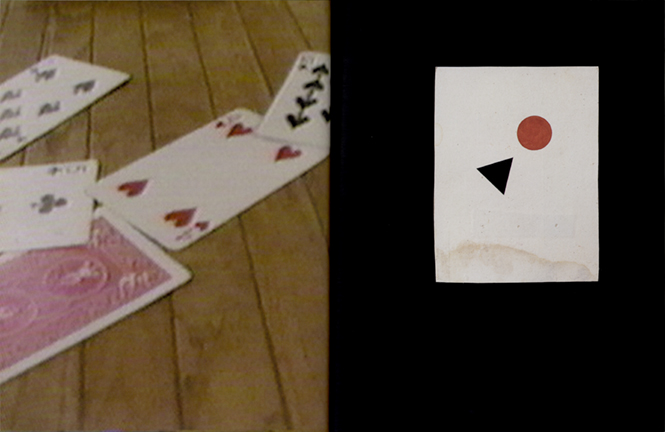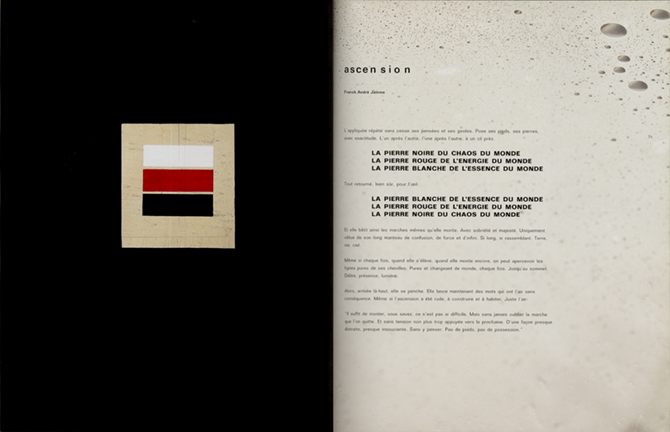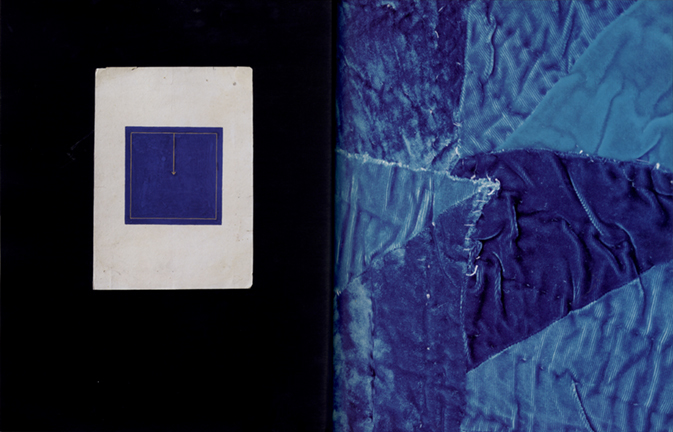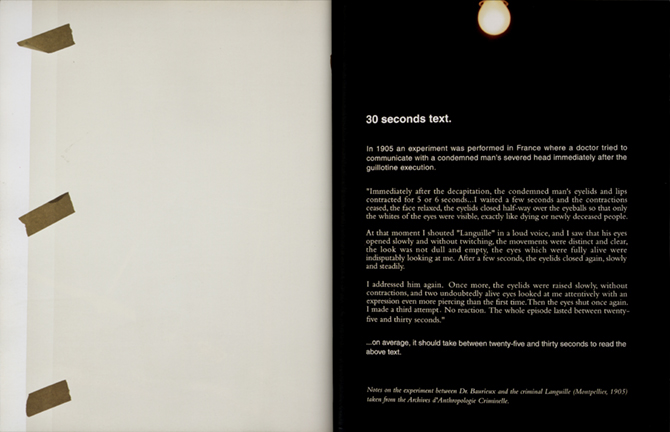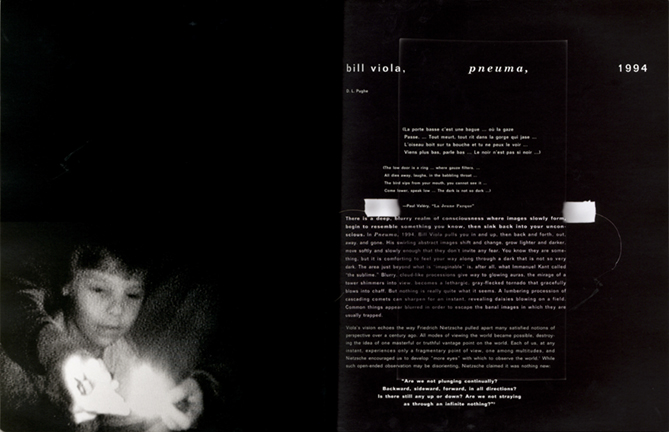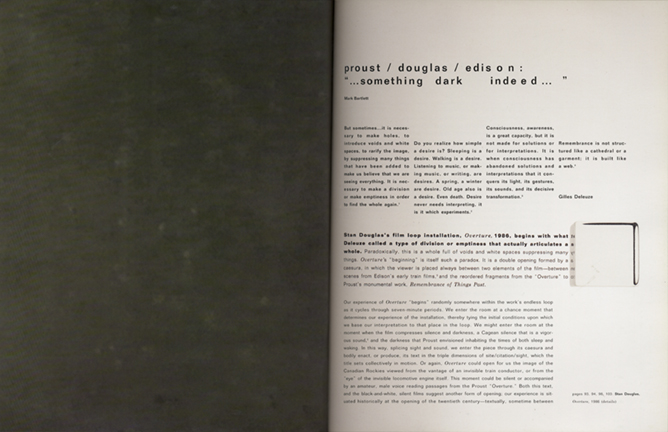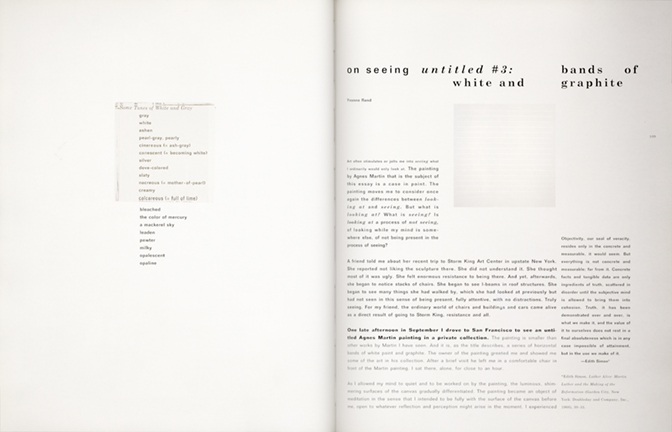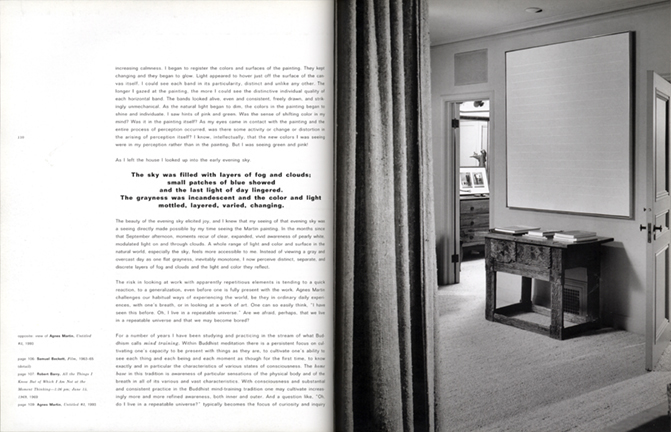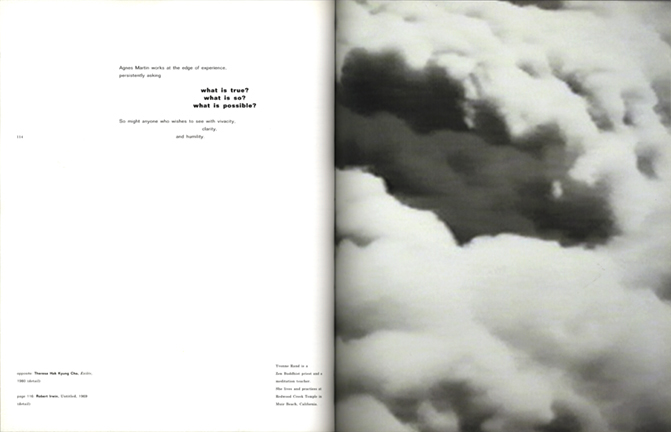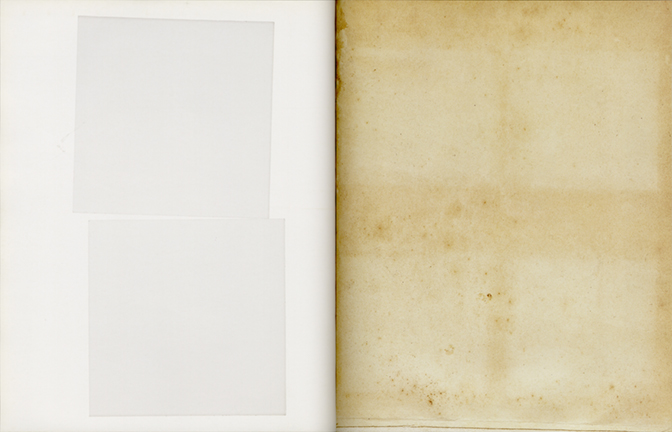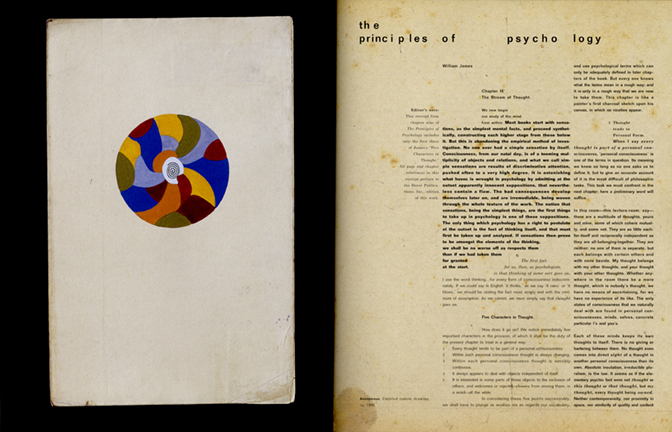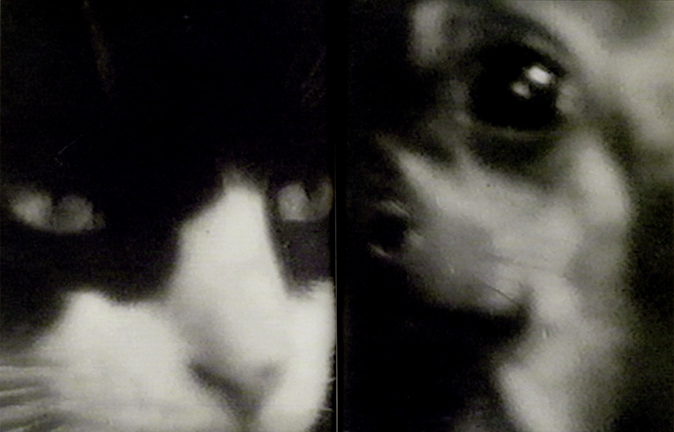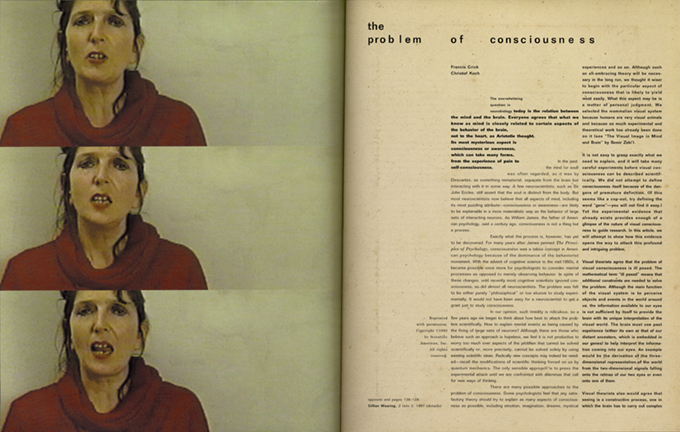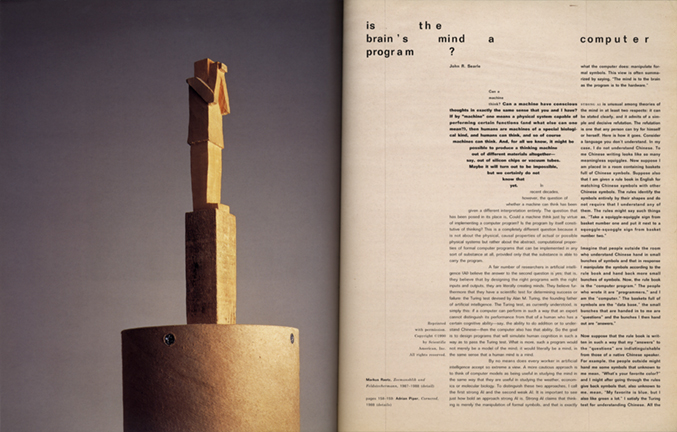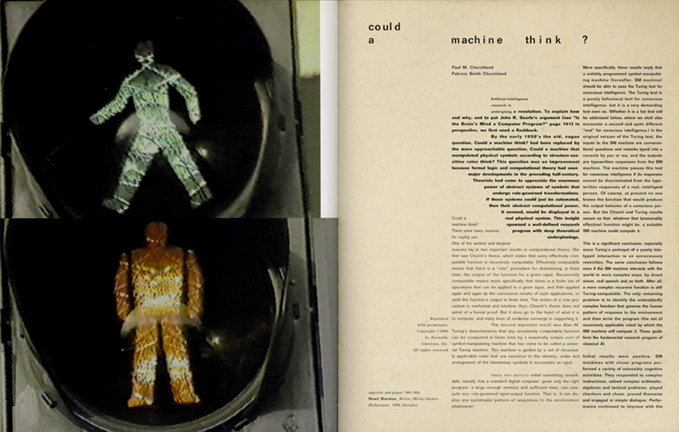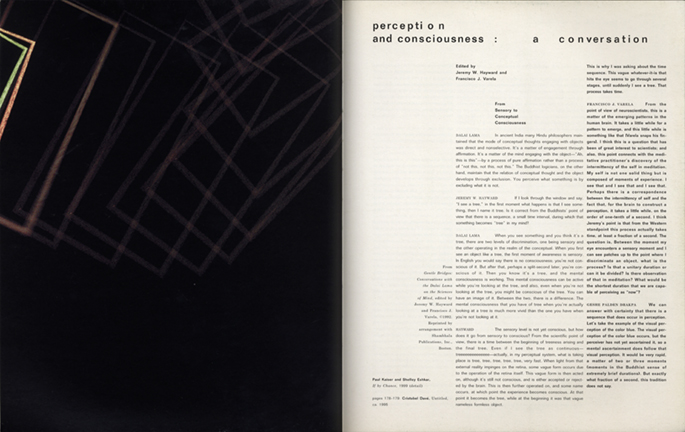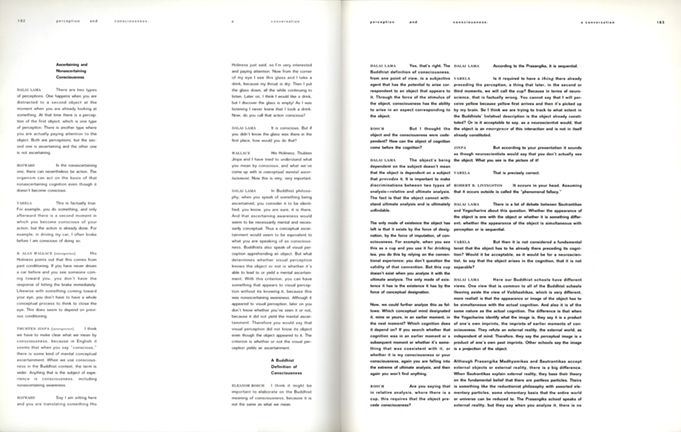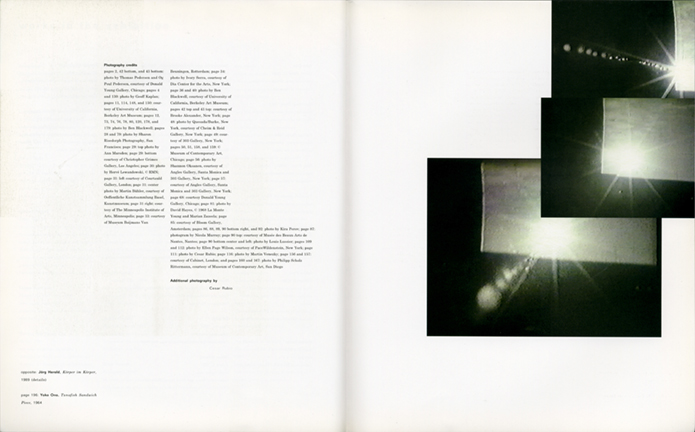WATTIS INSTITUTE: Searchlight
Searchlight: Consciousness at the Millennium Wattis Institute, California College of the Arts 1999
Searchlight: Consciousness at the Millennium
Wattis Institute, California College of the Arts
1999
Wattis Institute, California College of the Arts
1999
“Searchlight,” the first major exhibition of the newly formed Wattis Institute at California College of the Arts, won popular and critical acclaim for its curator and first director, Lawrence Rinder. The show's premise — art that examined and addressed the very notion of our human consciousness — proved a challenge for the catalog since most of the works were designed to be experienced, not just seen.
Like much of the work in the show, the catalog was designed to include subtle perceptual devices and invisibilities slowly made visible. The search began with plexiglass, light, tape, text, and thread — all materials that can be invisible unless brought to the surface. From these studies, I decided to introduce each of the catalog’s essays with a sliver of its own reflection in a simple plexiglass cube.
Throughout the book, pairings of artworks on facing pages form an extended chain of linked relationships. I was also given the opportunity to include some of my material studies in the final design. These included a page from a nineteenth century photo album whose aged paper is tinged with ghostly time-induced silhouettes of its contents.
Beyond the expected essays referencing the artwork, Rinder chose to include a substantial collection of classic and contemporary texts on the subject of consciousness. Beginning with an 1884 essay by William James, “The Principles of Psychology,” and concluding with a 1992 conversation with the Dalai Lama, these reprints give unexpected insight to the science and philosophy behind the artwork. Each reprint begins on a background of paper aged from the actual period of its publication.
Like much of the work in the show, the catalog was designed to include subtle perceptual devices and invisibilities slowly made visible. The search began with plexiglass, light, tape, text, and thread — all materials that can be invisible unless brought to the surface. From these studies, I decided to introduce each of the catalog’s essays with a sliver of its own reflection in a simple plexiglass cube.
Throughout the book, pairings of artworks on facing pages form an extended chain of linked relationships. I was also given the opportunity to include some of my material studies in the final design. These included a page from a nineteenth century photo album whose aged paper is tinged with ghostly time-induced silhouettes of its contents.
Beyond the expected essays referencing the artwork, Rinder chose to include a substantial collection of classic and contemporary texts on the subject of consciousness. Beginning with an 1884 essay by William James, “The Principles of Psychology,” and concluding with a 1992 conversation with the Dalai Lama, these reprints give unexpected insight to the science and philosophy behind the artwork. Each reprint begins on a background of paper aged from the actual period of its publication.

